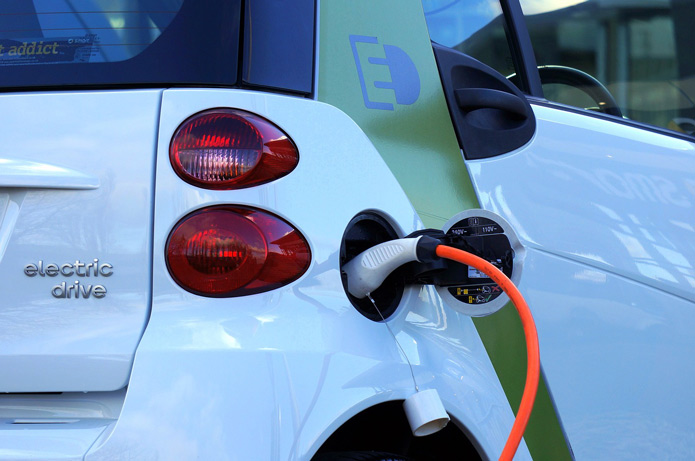What differences should I expect for servicing?
Running and servicing an electric car
• What differences should I expect for servicing?
• MoT Testing and the EV
• Tyres – are they the same?
• Batteries – what happens over time?
• Breakdowns and emergency kit.
Electric car technology has become more and more mainstream in the past five years and, if the Government’s current policy is seen through to a conclusion, will become virtually the only form of car on sale, come 2030.
So, what do you have to be mindful of, charging and range issues apart, if and when you opt to become an electric car driver?
Well there is actually much good news, but naturally, a few less straightforward topics you might encounter when running an electric car.
Servicing
With an electric car, servicing generally becomes simpler because there are fewer parts and mechanical systems to check and maintain. Many of the regular consumable items that get changed in a service simply aren’t there with an electric car: there is no engine oil, plugs, fuel or oil filters, or radiator fluids to deal with. So, you might well have an extremely pleasant surprise when the bill comes, if you have previously been driving a petrol or diesel car, as it is likely to be significantly less.
What does a workshop need to service on an electric car?
Obviously, things like the braking system, heating system and electrics all need to be checked over, so brake pads and discs will need periodic replacement. There is good news here also, because of the regenerative systems used on electric cars – where the energy that is generated when you brake is converted back to battery power to help extend your range – actually help ensure less use of the physical brakes, as much of the braking power can come from the motor.
Also, as with any piece of computer controlled electrical equipment, there are regular updates of the software for the car and its systems and, given that time is money in a workshop, this will be charged for. It doesn’t, however, take a huge amount of labour to bring this about.
Servicing is certainly NOT a DIY job, as some parts of electric car systems can expose you to potentially harmful electric shocks. Furthermore, although electric cars are becoming increasingly commonplace, especially in our cities, you really need to make sure that whoever you entrust your car to, with regards to service and maintenance, is qualified and experienced on electric vehicles (EV) as, in many respects, they differ from conventional internal combustion engine powered cars. Also, the workshop needs to have access to the manufacturer’s software for your car, otherwise, some of the necessary diagnostics and updates might not be available, which would mean the job is only half done.
MoT
Electric cars are subject to the same rules for MoT as conventional cars, i.e. once your car is three years old, it needs to pass the annual test. Obviously, some of the tests during the inspection do not apply, but many items – brakes, lights, wipers, tyres, etc – still need to be of the required standard.
Tyres
Tyres are simple, they’re round and black and if they fit on your rim, they work… right?
Well, not exactly, as the tyre manufacturers now design and produce specific tyres that are optimised for EVs.
You can, of course, fit any tyres that are correct for the wheels you have, but the special EV tyres offered by many manufacturers are built to deal with higher weights and to offer less rolling resistance. The correct tyres will therefore last longer and also ensure greater range from a battery charge.
Battery Issues
Before the adoption of electric cars became commonplace, much was made about batteries becoming less efficient as they age. It is true to say that there is some drop off in battery performance with time, however, the statistics seem to show that electric car batteries maintain their performance pretty well.
Batteries are, however, the main reason that electric cars have become targets of theft. The batteries are valuable and there is a ready market for them – so the number of electric cars being stolen has risen noticeably in recent times. If your car doesn’t have GPS tracking with it as standard, it might be worth investing in some sort of tracking device for your car, for additional peace of mind.
Breakdowns
If you have a breakdown, you need to be aware that electric cars, unlike internal combustion engine powered cars, will slow to a halt quite quickly and they will be much more difficult to move once stopped, because to engage ‘neutral’, the engine has to be switched on.
If you have a two-wheel drive EV, you are going to need a tow truck and if you have four-wheel drive, most likely a low-loader will be required. The good news is that breakdown and recovery services are used to dealing with electric cars, so it shouldn’t present them with any undue problems, but just ensure they are aware it is an EV when you call in the breakdown.
Emergency Kit
Your EV will almost certainly come with a charging cable. Some come with the Type 2 cables that are commonplace at charging points everywhere, others come with domestic 3-pin plugs. Ideally, you will have both options to give yourself the greatest flexibility should you ever be really close to running out of charge.
Otherwise, generally, it is pretty much standard – warning triangles, spare bulbs, a high visibility jacket. If you are going to buy a fire extinguisher, then look at halotron extinguishers. They are more expensive, but are perfect for EVs, as they don’t leave physical residue and don’t damage electronics, unlike normal fire extinguishers.

